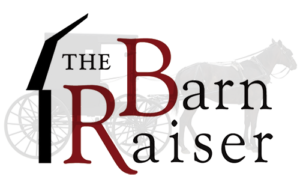Arriving in Lancaster County in the 1720s, the oldest and largest Amish community in the country is the Amish of Lancaster, Pennsylvania.
The story of the Pennsylvania Amish community dates back to the 16th century Reformation in Europe, when the Anabaptist movement spurred the creation of three “plain” communities: the Amish, Mennonites and Brethren. Although these spiritual groups have similarities, the Amish are the most conservative, emphasizing humility, family, community and separation from the non-Amish world, which includes a reluctance to adopt modern conveniences such as electricity.
Members of this conservative Christian faith came to Pennsylvania in the early 18th century to escape persecution in Europe for their Anabaptist beliefs. The Pennsylvania Amish community in Lancaster County is the oldest and largest Amish community in the United States, numbering about 30,000. The population has more than doubled in size in the past 20 years.
Pennsylvania Amish History
The Amish have their roots in the Mennonite community. Both were part of the early Anabaptist movement in Europe, which took place at the time of the Reformation. The Anabaptists believed that only adults who had confessed their faith should be baptized, and that they should remain separate from the larger society. Many early Anabaptists were put to death as heretics by both Catholics and Protestants, and many others fled to the mountains of Switzerland and southern Germany. Here began the Amish tradition of farming and holding worship services in homes rather than churches.
In 1536, a young Catholic priest from Holland named Menno Simons joined the Anabaptist movement. His writings and leadership united many of the Anabaptist groups, who were nicknamed “Mennonites.” In 1693, a Swiss bishop named Jacob Amman broke from the Mennonite church. His followers were called the “Amish.” Although the two groups have split several times, the Amish and Mennonite churches still share the same beliefs concerning baptism, non-resistance, and basic Bible doctrines. The Amish and Mennonites both settled in Pennsylvania as part of William Penn’s “holy experiment” of religious tolerance. The first sizable group of Amish arrived in Lancaster County in the 1720s or 1730s.
There are actually three families, or Anabaptist-related groups, found in Lancaster County: the Amish, Mennonites and Brethren. All three groups share the Anabaptist belief that calls for making a conscious choice to accept God. (Accordingly, only adults are baptized.) The three groups also share the same basic values concerning the all-encompassing authority of the Bible, a philosophy of brotherhood and non-resistance and the importance of family and community.
The groups differ primarily in matters of dress, language, forms of worship and the extent to which they allow modern technology and the forces of the “outside world” to impact their lives. Most Brethren and Mennonites dress much like their “English” neighbors. Other Mennonites, Brethren and Amish Mennonites wear distinctive Amish clothing but may make use of “worldly” conveniences, such as cars, electricity and telephones. On the other hand, Old Order Mennonite and Old Order Amish groups are more restrictive in their views of modern technology, with the Old Order Amish being the most conservative of Lancaster County’s “plain” groups.
Pennsylvania Amish Beliefs
There is no single governing body for the entire Old Order Amish population; rather, each church district decides for itself what it will and will not accept. However, all districts base their regulations on a literal interpretation of the Bible and an unwritten set of rules called the Ordnung. And the population as a whole stresses humility, family, community and separation from the modern world.
Humility is the hallmark of Amish beliefs. Mild and modest personalities are esteemed. Patience, waiting and yielding to others are marks of maturity. Obedience, conformity to goals and community activities are encouraged. To preserve the Amish identity and maintain spiritual harmony, members are encouraged to surrender their personal aspirations for the sake of community purity. These ideals are maintained by keeping all work, play, worship, commerce and friendship within the Amish orbit.
The Pennsylvania Amish believe that community harmony is threatened by secular values such as individualism and pride, which permeate the modern world. Thus, the Amish of Pennsylvania curb interaction with outsiders and insulate themselves from modern technology and mass media. They also prohibit habits that feed individualism and greed, as displayed through their plain dress style and prohibition of personal photographs. Personal Bible study and devotions are discouraged because individual interpretations may challenge traditional doctrine. Buggies are a dark gray color so they can blend into their surroundings rather than stand out.
Although the Pennsylvania Amish resist cultural influences, they are willing to strike compromises with the modern world, tapping its benefits while still preserving the Amish identity. They are willing to use modern technology to live, work, and communicate – as long as they do not disrupt family and community stability.


